Digestive System - 2 Class 6 Worksheet Science
Q1: Fill in the blanks.
(i) Stomach, food pipe, small intestine and large intestine are parts of your _________ system.
Ans: digestive
Your digestive system is like a food processing factory in your body. It includes the stomach, food pipe (also called the esophagus), small intestine, and large intestine. These parts work together to break down the food you eat into smaller pieces so your body can use the nutrients from the food to grow and stay healthy.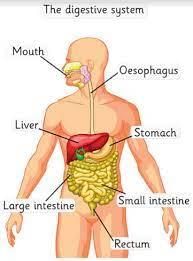
(ii) The digestive juices present in the mouth is _________.
Ans: salivary
When you chew your food in your mouth, it mixes with special liquids called saliva. Saliva helps make your food wet and soft, which makes it easier to swallow. It also contains tiny helpers called enzymes that start to break down the food into smaller parts.
(iii) The food pipe takes the food to the _________.
Ans: stomach
After you chew your food in your mouth, it needs to go to your stomach to continue getting digested. The food pipe, which is like a long tube, carries the chewed food from your mouth to your stomach. It's like a conveyor belt for your food!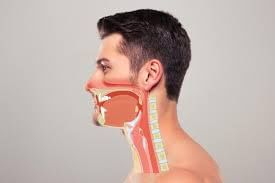
(iv) Digestion is completed, and food is absorbed into the blood in the __________________.
Ans: small intestine
Imagine your stomach as a mixer that breaks down food into tiny pieces. After that, these tiny pieces need to be absorbed so your body can use them. The small intestine is like a sponge that soaks up all the good stuff from your food and sends it into your blood so your body can use it for energy and growth.
(v) Water is absorbed from the undigested food in the __________________.
Ans: large intestine
Not everything in your food can be used by your body. The parts that your body can't use become waste. Before your body gets rid of this waste, the large intestine takes out extra water from it. This makes the waste thicker and easier to get rid of when you go to the bathroom. So, the large intestine helps your body save water!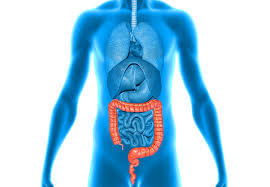
Q2: True or False.
(i) The enamel is harder than bones.
Ans: True.
Enamel is the hardest substance in the human body. It is a highly mineralized outer layer of the tooth that protects the underlying dentin and pulp. Bones are also hard but not as hard as enamel, making enamel more resistant to wear and tear.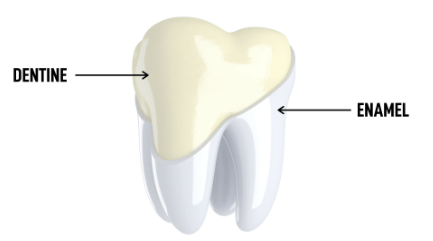
(ii) Every time a tooth falls off, a new tooth grows in its place.
Ans: False.
In humans, primary (baby) teeth fall out naturally as a part of the normal process of dental development, and they are replaced by permanent teeth. Once the permanent teeth grow in, there are no more natural replacements if they are lost.
(iii) All teeth have the same shape.
Ans: False.
Different teeth have different shapes and functions. For example, incisors at the front are sharp and used for cutting, canines are pointed for tearing, premolars have a flat surface for grinding, and molars are large and have multiple cusps for efficient grinding.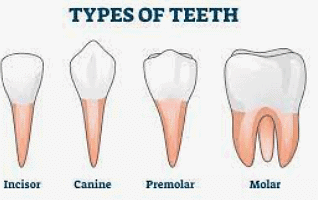
(iv) The dentine is the softest part of a tooth.
Ans: False.
Dentin is not the softest part of a tooth. It lies beneath the enamel and is softer than enamel but still relatively hard and durable. It provides support to the enamel and acts as a protective layer around the tooth's pulp, which contains nerves and blood vessels.
(v) Once a cavity is formed in a tooth, it has to be taken out.
Ans: False.
Once a cavity (decay) forms in a tooth, it doesn't necessarily have to be taken out. If the cavity is small and detected early, it can be treated with dental fillings to restore the damaged tooth structure. However, if the cavity is left untreated and it progresses, it can lead to more significant issues and may require more extensive treatments like root canals or extractions. Regular dental check-ups can help identify cavities early and prevent complications.
Q3: Multiple Choice Questions (MCQs).
(i) How many teeth does a child of age 3 have?
(a) 20 milk teeth
(b) 20 permanent teeth
(c) 32 milk teeth
(d) 32 permanent teeth
Ans: (a)
At the age of 3, a child usually has 20 milk teeth, also known as deciduous teeth or primary teeth. These teeth start erupting around 6 months of age and continue until around 2-3 years. The milk teeth consist of 8 incisors, 4 canines, and 8 molars, with 4 molars in each quadrant of the mouth.
(ii) The hardest part of teeth is the: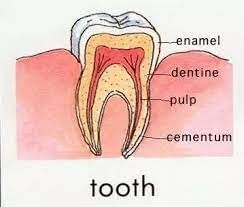 (a) Enamel
(a) Enamel
(b) Dentine
(c) Pulp
(d) Gum
Ans: (a)
The enamel is the hardest and outermost layer of the teeth. It is a highly mineralized tissue that covers the crown of the tooth, which is the part visible above the gumline. Enamel is composed mainly of hydroxyapatite crystals, making it the most durable substance in the human body. Its hardness protects the underlying dentin and pulp from damage.
(iii) Which teeth in your mouth are wide and flat?
(a) Incisors
(b) Molars
(c) Premolars
(d) Both (a) and (b)
Ans: (b)
Molars are the wide and flat teeth in the mouth, located at the back of the dental arch. They are responsible for grinding and chewing food. The molars have a larger surface area with multiple cusps to facilitate effective chewing of food before swallowing.
(iv) You get a toothache when a cavity in the tooth reaches the:
(a) Crown
(b) Dentine
(c) Pulp
(d) Gum
Ans: (c)
You get a toothache when a cavity (decay) in the tooth reaches the pulp. The pulp is the soft, innermost layer of the tooth that contains nerves, blood vessels, and connective tissue. When the enamel and dentin are damaged due to decay or physical trauma, bacteria can reach the pulp, leading to inflammation and irritation of the nerves, causing pain and sensitivity.
Q4: Give One-Word Answer.
(i) The process of breaking down of food into simpler form.
Ans: Digestion
When we eat food, our body needs to make it smaller and simpler so it can use the good parts from the food. This process is called digestion.
(ii) A vegetable eaten raw.
Ans: Salad
Some vegetables are yummy and safe to eat without cooking them! When we eat raw vegetables, we usually don't heat them up; we just wash and cut them into small pieces. For example, carrots, cucumbers, and lettuce can be eaten raw in a tasty salad.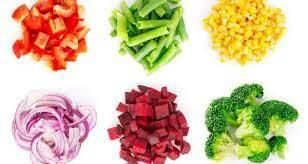
(iii) A food item rich in starch.
Ans: Potato
Starchy foods have something called starch, which gives us energy. Imagine starch as a fuel for our bodies. One food that's rich in starch is the potato. When we cook potatoes, they become soft and full of energy we can use to play, study, and do all the things we love!
(iv) A digestive liquid secreted by salivary glands.
Ans: Saliva
Inside our mouth, there are little helpers called salivary glands. These glands make a special liquid called saliva. It's like a helper juice for our food! Saliva helps us chew and swallow our food. It also has tiny workers called enzymes that start breaking down the food, just like how you might use tools to take apart a toy.
(v) The diet which contains all the nutrients in the right amount.
Ans: Balanced
Think of your body like a car. To make it go, you need the right kind of fuel, and not too much or too little. A balanced diet is like the perfect mix of foods that gives your body all the things it needs to be strong and healthy. It includes different foods like fruits, vegetables, grains, proteins (like meat or beans), and dairy (like milk and cheese) in the right amounts.
Q5: Answer the following questions.
(i) Name four organs of your digestive system, which make digestive juices.
Ans: The four organs of your digestive system, which make digestive juices are salivary glands, small intestine, liver and pancreas.
(ii) How is saliva useful in swallowing the food?
Ans: Saliva is a digestive juice made by the salivary glands that mixes well with the food while chewing and soften the food so that it can be easily swallowed.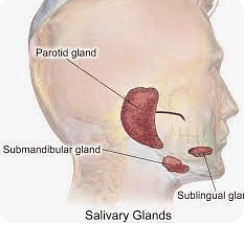
(iii) What happens to the food in the small intestine?
Ans: In the small intestine the food mixes with more digestive juices and breaks down further.
(iv) What happens to the undigested portion of food?
Ans: Water is absorbed from the undigested portion of food and the solid part is thrown out of the body through the anus.
(v) How is fiber useful?
Ans: Fiber is useful for our body as it helps in removing waste from our body.
|
49 videos|156 docs|34 tests
|
FAQs on Digestive System - 2 Class 6 Worksheet Science
| 1. What is the function of the digestive system? |  |
| 2. How does the digestive system work? |  |
| 3. What are the main organs of the digestive system? |  |
| 4. What are the common digestive system disorders? |  |
| 5. How can one maintain a healthy digestive system? |  |
















